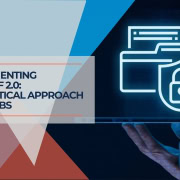The Ultimate Data Protection Guide | 2024 Edition
Last Updated on April 15, 2024

The Ultimate Guide to Data Protection 2024: Safeguarding Your Digital Future
The amount of information we generate and share online expands each day. From social media profiles to online shopping habits to business records, our digital footprints are vast and contain sensitive details about our lives. This explosion of data makes robust data protection strategies more essential than ever. Businesses and individuals who fail to take this matter seriously face serious threats, including costly data breaches, identity theft, and damaged reputations.
This guide tackles the ever-shifting realm of data protection in 2024. It reveals essential information, trends, and strategies for business owners and anyone concerned about safeguarding their digital information.
Table of Contents
- 1 What is the main purpose of Data Protection?
- 2 Protection of Personal Data
- 3 Key Principles of Data Protection
- 4 How Data Protection Laws Impact Both Individuals and Businesses
- 5 Emerging Data Protection Trends to Watch in 2024
- 6 New Data Protection Technologies on the Horizon
- 7 Adapting to Global Data Protection and Privacy Laws
- 8 How to Ensure Your Data Privacy in the Age of Information
- 9 Minimizing Data Breach Risks Through Proactive Measures
- 10 Navigating Through General Data Protection Regulation (GDPR) Compliance
- 11 The Future of Data Protection and Privacy Regulations
- 12 FAQ: Your Data Protection Questions Answered
What is the main purpose of Data Protection?
Data protection is the shield that safeguards our digital information. It contains practices, safeguards, and laws designed to ensure that personal data is:
Used fairly and lawfully: Organizations must follow legal requirements when collecting, processing, and storing data.
Protected from misuse: Robust security measures are in place to minimize unauthorized access, data breaches, and theft risks.
Managed with transparency: Individuals know how their data is used, and they have the right to control its collection and processing.
Think of data security like the lock on your front door. It's your first line of defense, creating barriers against would-be intruders who might seek to steal precious belongings. Without proper data security, sensitive information becomes vulnerable.
Protection of Personal Data
When discussing data protection, the focus is often on personally identifiable information (PII). This includes details like:
| Type of Personal Data | Explanation | Sensitivity Level |
|---|---|---|
| Full Name | Your complete legal name. | Medium |
| Social Security Number | A unique identifier issued by the government. | Very High |
| Home Address | Your physical residential location. | High |
| Email Address | Your electronic mail contact. | Medium |
| Financial Information | Bank accounts, credit card numbers, and investments. | Very High |
| Medical Records | Health history, diagnoses, test results, etc. | Extremely High |
| Biometric Data | Fingerprints, facial recognition, voice patterns. | Extremely High |
In the wrong hands, this type of sensitive data opens the door to devastating consequences:
- Identity Theft: Criminals can use stolen data to open credit accounts, file fraudulent tax returns, or apply for benefits in your name.
- Financial Fraud: Personal data can be exploited to drain bank accounts, make unauthorized purchases, or even obtain loans in your name.
- Reputational Damage: If private medical information, financial records, or other sensitive data is exposed, the victim could experience lasting damage to their reputation.
The risks for businesses are equally serious. Data breaches damage customer trust, lead to lawsuits, and attract hefty fines from regulators.
Key Principles of Data Protection
Sound data protection practices aren't just about following the law but building trust and protecting individual rights. These core principles underpin data protection regulations around the world:
- Lawfulness, Fairness, Transparency: There must be valid legal grounds for processing personal data, and it must be done ethically with clear communication to the individual.
- Purpose Limitation: Data can only be collected for specific, stated purposes and cannot be repurposed without additional consent.
- Data Minimization: Organizations should collect only the minimum necessary data to fulfill their purpose.
- Accuracy: Data must be kept accurate and up-to-date, with mechanisms available for individuals to correct inaccuracies.
- Storage Limitation: Personal data shouldn't be stored indefinitely. Clear retention periods should be established, and data should be securely deleted when no longer needed.
- Integrity & Confidentiality: Strong security measures are essential to protect data from unauthorized access, theft, or alteration.
- Accountability: Organizations are responsible for demonstrating that they handle data lawfully and in accordance with these principles.
Note: Specific regulations like the European Union's General Data Protection Regulation (GDPR) have further requirements.
How Data Protection Laws Impact Both Individuals and Businesses
Data protection laws have a dual effect: They empower people while establishing clear responsibilities for organizations that handle personal information.
Individuals: Rights and Protections
Data protection laws like the GDPR and the California Consumer Privacy Act (CCPA) grant individuals significant rights, including:
- Right to Access: Individuals can request copies of their personal data held by an organization.
- Right to Correction: They can ask for inaccurate data to be corrected.
- Right to Erasure (Right to be Forgotten): Under certain circumstances, people can request that their data be deleted.
- Right to Restrict Processing: In some cases, individuals can limit how their data is used.
- Right to Opt-Out of Data Sales: Many jurisdictions allow individuals to prevent their data from being sold to third parties.
Businesses: Obligations and Liabilities
Businesses shoulder the burden of complying with data protection laws. This includes:
- Developing Privacy Policies: Clear and transparent policies outlining how data is collected, used, and protected.
- Responding to Data Subject Requests: Having processes in place to fulfill individuals' rights requests in a timely manner.
- Data Breach Notification: Informing regulatory authorities and potentially affected individuals within strict timeframes in the event of a data breach.
- Implementing Security Measures: Adopting appropriate technical and organizational security safeguards to protect personal data.
- Potentially Appointing a Data Protection Officer (DPO): Depending on their activities and jurisdiction, some organizations may be required to designate a DPO.
Failing to meet these obligations can result in fines, penalties, and long-lasting reputational damage.

Emerging Data Protection Trends to Watch in 2024
Data protection is constantly evolving, shaped by technological advancements and changing societal concerns. Here are key trends to monitor in 2024:
Increased Focus on Children's Online Privacy: Lawmakers worldwide are focusing on protecting the data privacy of minors. Expect stricter regulations surrounding the collection and use of data from those under a specific age (often 13 or 16, depending on jurisdiction).
The Intersection of AI and Data Privacy: Artificial intelligence is increasingly used to process data, making decisions about us based on information and patterns. Balancing the benefits of AI while ensuring data privacy will be an ongoing challenge, demanding clear frameworks and ethical guidelines for using AI.
Zero-Trust Frameworks: Traditional security models assumed everything inside an organization's network was trustworthy. Zero-trust flips this, requiring continuous verification for any user or device seeking access to data. This more proactive approach helps minimize risks in an era of increasing cyber threats.
New Data Protection Technologies on the Horizon
While laws and regulations set the standards, innovative technologies are vital in keeping data safe. Here are a few exciting developments gaining traction:
Homomorphic Encryption: This revolutionary technique allows computations directly on encrypted data. Imagine analyzing and deriving insights from sensitive data without decrypting it! Homomorphic encryption is still in its early stages but offers vast potential to enhance privacy in various fields.
Data Tokenization: Actual sensitive data (e.g., a credit card number) is replaced with a randomly generated, non-sensitive substitute called a “token.” The real data rests securely elsewhere. Even if a breach occurs, what's exposed is largely useless to attackers. Tokenization helps minimize risks when handling financial transactions or other sensitive details.
Privacy-Enhancing Technologies (PETs): This broad term covers a range of tools and techniques that enhance user privacy while utilizing data. PETs contain differential privacy (adding noise to datasets to hide individual data points), secure multi-party computation (collaboration on data without revealing private inputs), and more.
Important Note: New data technologies must be deployed within a strong framework of legal compliance and ethical practices.
Adapting to Global Data Protection and Privacy Laws
The data protection landscape isn't a single, uniform picture. Businesses operating internationally must navigate a complex patchwork of regulations that vary from country to country. Here's an overview of some key players:
The European Union's General Data Protection Regulation (GDPR): The GDPR is widely considered one of the strictest and most influential data protection laws globally. Its far-reaching impact means even businesses based outside the EU often need to ensure compliance if they handle the data of EU residents.
California Privacy Laws: California has been a frontrunner in US data privacy legislation, with laws like the California Consumer Privacy Act (CCPA) and the more recent California Privacy Rights Act (CPRA). These laws give consumers significant control over their data and influence similar legislation emerging in other states.
Other Major Regulatory Frameworks: Countries like Brazil, China, Canada, and more have data protection laws with distinct requirements. Staying up-to-date on evolving regulations in specific jurisdictions is critical.
Strategies for Global Compliance
While navigating multiple regulations might seem daunting, finding common ground can streamline the process. Consider:
Taking a Privacy-First Approach: Build a strong data protection framework based on core principles like those outlined earlier. Meeting the strictest standards (like the GDPR) often positions you well to fulfill requirements in other regions.
Centralized Data Management: Implement systems for tracking data collection, storage, and processing activities to simplify border compliance.
International Data Transfer Mechanisms: If your business transfers data across borders understand legal instruments like Standard Contractual Clauses (SCCs) that help ensure compliance.
Note: Seeking legal advice from experts in specific jurisdictions is often advisable when dealing with complex cross-border data flows.
How to Ensure Your Data Privacy in the Age of Information
Businesses certainly have responsibilities, but individuals aren't powerless when it comes to protecting their data. Here are a few key strategies you can use to maintain control:
Effective Strategies for Personal Data Protection
Practice Smart Password Habits: Use strong, unique passwords for each online account. Avoid reusing the same one across multiple sites. Consider a password manager to help you keep track.
Enable Two-Factor Authentication: This adds an extra layer of security to logins, requiring your password and a code sent via text or an authentication app.
Be Wary of Phishing Scams: Don't click on suspicious links in emails or text messages. Verify the sender's identity and website legitimacy before providing personal information.
Review App and Website Permissions: Before you hit “allow,” think twice about whether an app or website genuinely needs access to your location data, contacts, or other information.
It's Your Right: Data Portability
Many data privacy laws give individuals the right to data portability. This means you can:
Request a copy of your personal data from a company in a usable, machine-readable format.
Easily transfer that data to another service provider if you choose.
Example: Imagine you've been using one fitness tracking app for a while. Data portability lets you obtain your workout history, sleep data, and other records and seamlessly switch to a competitor.
Minimizing Data Breach Risks Through Proactive Measures
While you can't completely eliminate data breach risks, a proactive approach significantly reduces them. Here are crucial actions to protect your personal information and your business:
Employee Education is Key
Employees are often the weakest link in cybersecurity. Address this head-on by:
- Regular Security Awareness Training: Cover topics like recognizing phishing attacks, social engineering tactics, and password best practices.
- Clear Policies and Procedures: Establish rules for handling sensitive data, remote work security, and incident reporting.
- Simulations and Testing: Conduct exercises to test your team's preparedness and identify areas for improvement.
Technical Safeguards
Encryption in Motion and at Rest: Encrypt data when it's being transmitted (e.g., over the internet) and when it's stored on devices or servers.
Software Updates and Patching: Criminals exploit known vulnerabilities. Diligently install security updates for operating systems, apps, and firmware.
Network Security: Firewalls, intrusion detection systems, and other network controls form layers of protection.
Access Controls: Limit access to sensitive data on a need-to-know basis and implement strong authentication mechanisms.
Important Point: Businesses should consider data breach insurance and have a detailed incident response plan to mitigate the fallout if the worst happens.
The GDPR stands as a benchmark for comprehensive data protection. While it's an EU regulation, its reach can extend to businesses worldwide. Here's a breakdown of some key aspects:
Core GDPR Requirements
Consent: In many cases, obtaining clear, unambiguous consent from individuals is necessary for processing their personal data. Exceptions exist but must be carefully evaluated.
Data Subject Rights: The GDPR empowers individuals with the rights we've discussed: access, rectification, erasure, etc. Businesses must have processes to respond to those requests in a timely manner.
Breach Notification: In case of a data breach that risks individuals' rights, notifying supervisory authorities (and potentially affected individuals) within 72 hours is often mandatory.
Data Protection Impact Assessments (DPIAs): Before engaging in high-risk data processing activities, conducting a DPIA is often needed to assess risks to data subjects and implement mitigation measures.
Appointing a Data Protection Officer (DPO)
Under certain circumstances, organizations are legally required to appoint a DPO:
Who Needs One? Organizations that process large amounts of personal data, whose core activities involve systematic monitoring of individuals, or those handling sensitive categories of data.
DPO's Role: The DPO acts as an independent advisor, monitoring compliance, educating the organization, and serving as an interface with supervisory authorities.
Important Note: GDPR is complex and potentially carries high fines. Don't rely solely on a blog post! Consult legal professionals or official resources for specific guidance tailored to your organization.
The Future of Data Protection and Privacy Regulations
Data protection is a never-ending journey. The landscape continues to shift in response to new technologies, changing social attitudes, and evolving threats. Expect to see stricter laws with increased enforcement in the coming years, particularly in areas like artificial intelligence and the protection of children's data. A global trend toward harmonization of data privacy standards is possible, though it's likely to be a gradual process.
Businesses and individuals who stay informed and adaptable gain the best chance at safeguarding valuable information. This means more than just reacting to new laws; it's essential to have proactive privacy-by-design approaches and ongoing security awareness.
The future of data protection hinges on collaboration and responsibility. Governments must create sensible laws, organizations must prioritize ethical practices, and individuals must understand their rights and exercise caution. Through this collective effort, we can build a digital world where data drives innovation while our privacy remains secure.
FAQ: Your Data Protection Questions Answered
What is the difference between data protection and data privacy?
They're closely linked! Data protection is the broader umbrella, focusing on safeguarding data through technical measures and legal frameworks. Data privacy centers on collecting, using, and sharing personal data, emphasizing individual rights and control.
I am a small business owner. Do I really need to worry about all these data protection laws?
Yes! Data breaches don't just target big corporations. Small businesses often hold sensitive customer information. Failing to comply with GDPR, CCPA, or similar laws can result in hefty fines, damage to your reputation, and erode customer trust.
What are some common ways data breaches occur?
Here are a few top culprits:
– Phishing attacks tricking employees into giving up access
– Unpatched software vulnerabilities
– Weak passwords or stolen credentials
– Lost or stolen devices containing unencrypted data
– Insider threats (employees acting maliciously or carelessly)
Is my data safe if I store it in the cloud?
Reputable cloud providers have robust security measures, BUT it's a shared responsibility. It's crucial to choose a provider with strong data protection practices, understand their security features, and still implement your own safeguards like encryption.
How does GDPR affect me, even if I am not based in the EU?
GDPR has a wide reach. If you offer services to or collect data from individuals in the European Union, you likely need to comply, even if your business is located elsewhere.
Is encryption the answer to all my data security problems?
Encryption is a vital tool, but it's not a silver bullet. Strong data protection requires a multi-layered approach: employee training, access controls, incident response plans, and more. Encryption makes it much harder for unauthorized parties to use data even if they get their hands on it.










Leave a Reply
Want to join the discussion?Feel free to contribute!